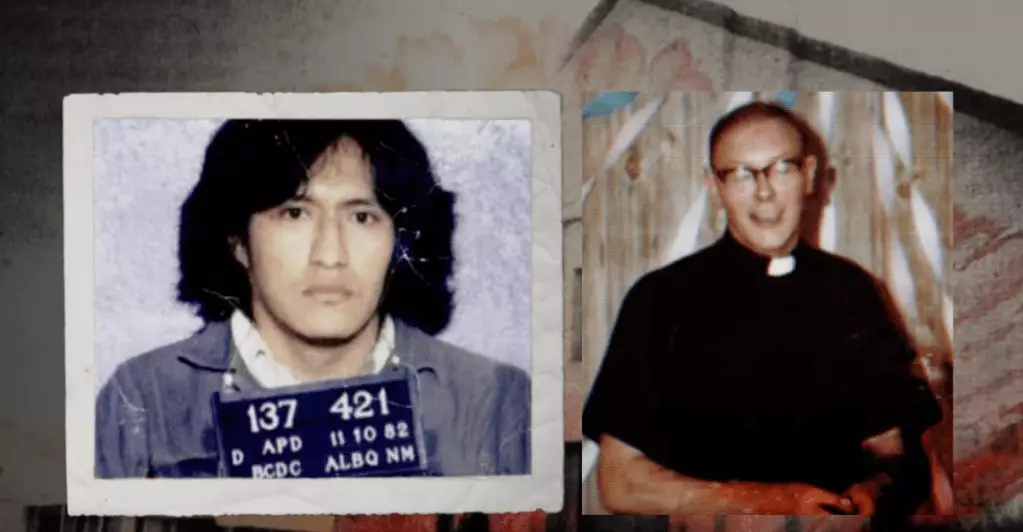In a chilling turn of events, the tragic death of Father Patrick Ryan, a closeted gay Catholic priest, in 1981 epitomizes a harrowing saga rooted in prejudice and betrayal. The discovery of his battered body in a run-down motel in Odessa, Texas, serves as a grim reminder of societal failings that often lead to devastating miscarriages of justice. Crucially, the circumstances surrounding Ryan’s death reveal how manipulation and bias can overshadow truth. What should have been a focused investigation morphed into a witch hunt, ultimately fixating on James Harry Reyos, an Indigenous man whose life would be irreparably altered by the state’s refusal to seek the actual perpetrator.
Systemic Failures and Misguided Justice
Texas law enforcement pinned the crime on Reyos despite the absence of credible evidence linking him to the scene of the crime. Even more egregious was the fact that Reyos had an alibi for the night of Father Ryan’s death—he was not even in the state of Texas at the time. Yet, a jury convicted him, thumbing its nose at facts in favor of the toxic narratives surrounding his identity as a closeted gay man and a Native American. This tragic case exemplifies how the intersections of race and sexual orientation played a decisive role in the prosecution’s strategy, highlighting deep-seated homophobia and racism that ran rampant in the small Texas community.
The Resurrecting Force of Justice
Fast forward to 2017, a renewed hope emerged when Mike Gerke, the newly appointed police chief of Odessa, embarked on a crusade to right the wrongs of the past. It was a personal connection—a true-crime podcast episode that sparked Gerke’s investigative instincts. His dedication to justice propelled him to re-examine the case with fresh eyes, leading to shocking discoveries about flawed procedures. The failure to process critical evidence, notably latent fingerprints at the crime scene, represented a significant oversight that had plagued the case for decades.
The advanced forensic technology, absent in the 1980s, became the key to unlocking the truth. Gerke’s re-investigation could pave the way for identifying new suspects, rekindling Reyos’s fight for exoneration. This act of courage not only reaffirms the immense potential for justice but also emphasizes the importance of addressing historical institutional negligence.
A Sorority of Change: The Innocence Project
The unfolding legal battle for James Harry Reyos found its stride through instrumental advocacy from the Innocence Project of Texas. Under the expert guidance of attorney Allison Clayton and a dedicated team of female law students, Reyos’s case garnered renewed attention and community support. The very essence of social justice was embodied in the collective efforts to confront and correct the wrongs of the past, raising crucial questions about the systemic flaws within the American justice system.
This collective struggle demonstrates how grassroots activism can yield transformative outcomes, shedding light on the glaring disparities that plague marginalized communities. Reyos’s case stands as a testament to the necessary persistence required to challenge wrong convictions—a glimmer of hope for victims of a broken system that all too often abandons those who desperately need it.
The Impact Beyond the Screen
Deborah Esquenazi’s documentary, “Night in West Texas,” masterfully chronicles the layers of Reyos’s tragic story while addressing broader societal issues regarding justice and representation. By weaving personal narratives with the stark realities of institutional failures, the film not only showcases Reyos’s struggles but also highlights the importance of recognizing the unique challenges faced by LGBTQ+ individuals, especially those entangled in the biases of a complex legal system.
Esquenazi’s previous work further establishes her commitment to shedding light on stories of the marginalized. As “Night in West Texas” gains traction, viewers are urged to confront their assumptions and biases, to grapple with uncomfortable truths that have lingered in the shadows for far too long. The film serves as a stark reminder that justice must extend beyond the courtroom and reach into the very fabric of society.
Through Reyos’s story and Esquenazi’s compelling narrative, the documentary resonates deeply, offering an opportunity for collective reflection and commitment to justice reform. It provokes necessary dialogues, beckoning audiences to reassess their understanding of the intersections of race, gender, and sexuality in legal outcomes, marking a vital step toward a more equitable future.

